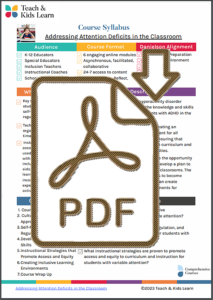Creating Meaningful Math
Engagement, Grades K-12
Course Description
 |
This course on creating meaningful math engagement will provide educators with the knowledge and skills necessary to effectively engage their students in meaningful math learning.
The course will cover key strategies for developing engaging math lessons that foster perseverance, problem-based learning, and inquiry. Educators will learn the importance of rigor in math instruction and explore techniques for integrating formative assessment into their lessons to support student learning and growth. |
In addition, the course will examine the role of the teacher in fostering a positive and supportive math learning environment, including the importance of building a growth mindset and promoting a sense of belonging and inclusion for all students.
Throughout the course, educators reflect on their teaching practices and develop a plan to incorporate engaging and meaningful math instruction. The goal of the course is to empower educators to become confident and competent teachers who create positive and meaningful math learning experiences for students.
Essential Questions
- How do students’ identities as mathematicians influence their math achievement?
- What is the relationship between problem-centered classrooms and math engagement?
- What are the best ways to engage students in applying rigorous mathematical concepts?
- What role do formative assessment and feedback play in developing mathematical skills and reasoning?
| Course Syllabus |
|
Comments from Teachers
“After taking this course, I am looking to use more hands-on lessons. I’m taking things I already do and turning them into more project-based lessons.”
“I’ve started implementing strategies for designing authentic tasks and questioning techniques that will encourage deeper thinking from students and rigor in the classroom.”
Danielson Teacher Framework Course Alignment


